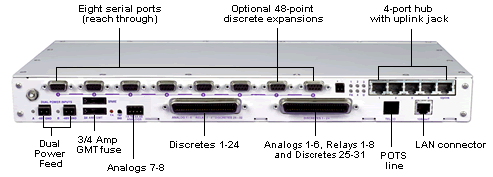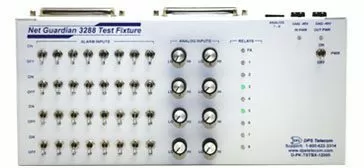Download our free Monitoring Fundamentals Tutorial.
An introduction to Monitoring Fundamentals strictly from the perspective of telecom network alarm management.
1-800-693-0351
Have a specific question? Ask our team of expert engineers and get a specific answer!
Sign up for the next DPS Factory Training!

Whether you're new to our equipment or you've used it for years, DPS factory training is the best way to get more from your monitoring.
Reserve Your Seat Today
| Protocols: SNMP and DCPx Discrete Inputs: 32 (expandable to 176) Alarm Detection Speed: User-defined (3 to 999 msec) Analog Inputs: 8 Analog Input Range: (-94 to 94 VDC or 4 to 20 mA) Control Outputs: 8 Form C relay contacts Maximum Voltage: 60 VDC/120 VAC Maximum Current:1 Amp, AC/DC IP Address Ping Targets: 32 Interfaces:
| Modem: 33.6K internal Visual Interface:LCD display with descriptive text 6 bicolor LEDs Audible Interface: Alarm speaker Dimensions: 1.75"H x 17"W x 12"D, (4.5 cm x 43.2 cm x 30.5 cm) Mounting: 19" or 23" rack Power Input: -48VDC (--40 to -56 VDC) see options Current Draw: 200mA Fuse: 1 Amp GMT Operating Temperature: 32°-140° F (0°-60° C) Operating Humidity: 0%-95% noncondensing |

A Lightweight, Compact Test Box for Your RTUs
If an alarm point fails, it's important to know if the problem lies with your NetGuardian, your site equipment, or your analog sensor. With the NetGuardian Test Box, minimize windshield time driving to remote sites by diagnosing problem while you're on-site.
The labeled toggles and knobs on the NetGuardian Test Box are easier than working with probes directly on amphenol connectors. With a Test Box, you can easily set all of the alarms you want.